The homeowner said that when she purchased four small Sunbeam heaters, the circuit breakers started tripping. Her baby had started to crawl, and the heaters were to keep her baby warm. The Sunbeam SFH111 heater may be small in size, but it is a 1,500 watt heater. It draws over 12 amps of current. There were two of these in the living room on the same branch circuit. Two time 12 equals 24, which is over the 20 amp rating of the circuit breaker. The purpose of a circuit breaker is to protect and keep the house wiring from overheating, and that is exactly what this one was doing.
The following photographs are from an exemplar heater. I did not find any electrical activity in any of the four heaters in the home.
For Maximum Resolution, Click on the Body of the Picture.
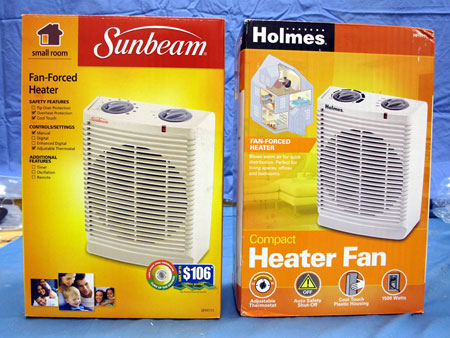
The Sunbeam Model SFH111 and Holmes HFH111 Heaters are
Identical except for the Packaging
and the Color of the Plastic.
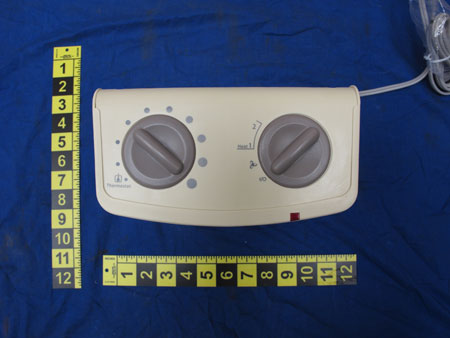
Heater Adjustable Thermostatic (Left) and Heater 4-Position On/Off
Switch: Off, Fan (only), Low Heat (1200W) and High Heat (1500W).
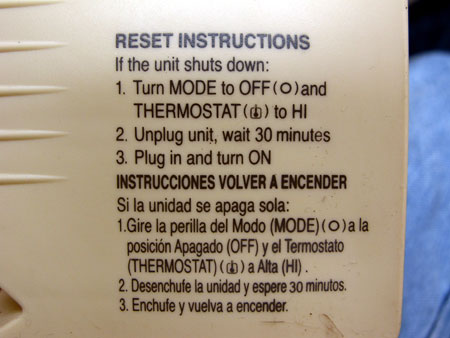
The Instructions for Resetting the Latching High-Limit Thermostat
are printed on the Side of the Heater (F09-066).
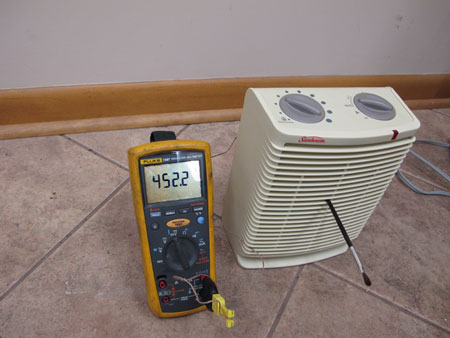
If the Fan Rotor is locked, the Internal Temperature will rise rapidly
and activate
the Latching High-Limit Thermostat (F09-066).
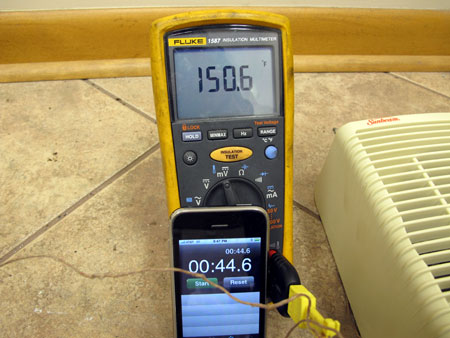
If the Fan is Tipped Over on its Back, the Air Flow is restricted
and the Latching High-Limit Thermostat will activate in 45 Seconds.
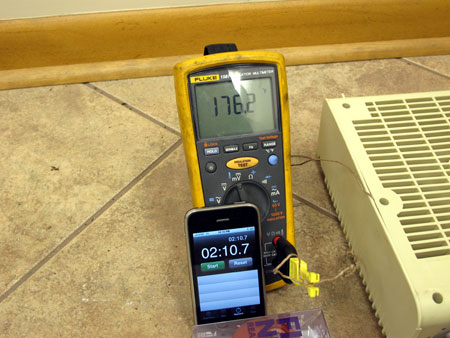
If the Fan is Tipped Over on its Face, the Air Flow is restricted
and the Latching High-Limit Thermostat will activate in 2 Minutes.
As will be shown in the next section, the body of the Sunbeam SFH111 Heater is constructed of fire retardant plastic. However, the rotory switch is not constructed of fire retardant plastic, and this can cause problems. The wire connections to the rotor switch are via metal springs. One researcher has shown that in the present of vibrations, such as from a fan, arcing at the wire connections an occur and this could result in a fire: J. Urbas, "Glowing Connections Experiments with Alternating Current below 1Arms" 54th IEEE Holm Conference on Electrical Contacts, pp 212-217, 2008.
To test the flammability of the UL94 V-2 rated plastic, I disabled the fan and bypassed all of the safety features. I didn't have a high opinion of V-2 rated plastic before this test. It is UL's lowest vertical burn rating and it allows for flaming dripping plastic to catch dry surgical cotton on fire. I ran the test twice. There was some flaming dripping plastic, but overall, it was very controlled burn. Only about 20 percent of the plastic was consumed. The real culprit was the non fire retardant plastic rotary switch. It's on the right in the photographs and video, and it burned like charcoal. Hence, although the enclosure of an appliance may be fire retardant plastic, watch out for the inside components.
For Maximum Resolution, Click on the Body of the Picture.
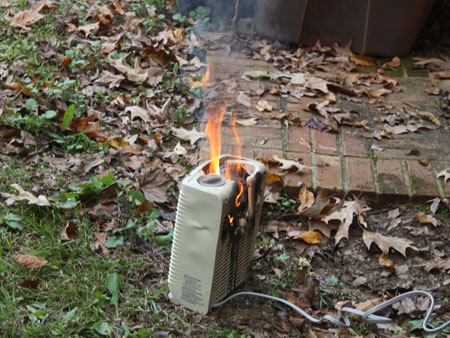
In the Early Stages of the Fire,
there is melting of the Plastic at the Top and Top-Back of the Heater.
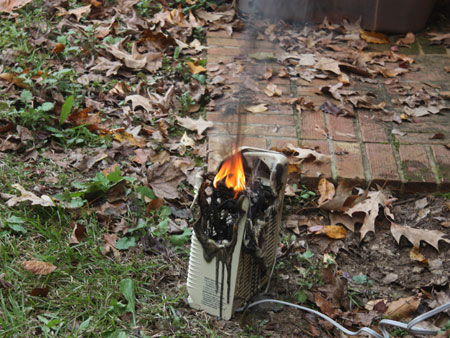
The Circuit Breaker has tripped, and with the Heat Source removed,
the only Plastic that continues to burn is the On/Off Switch.
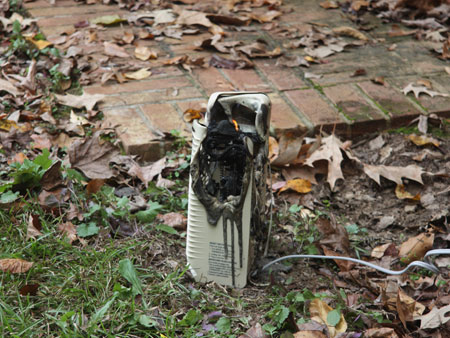
With the Heat Source Removed, the Fire will eventually extinguish
itself without Consuming All of the Plastic Housing (F09-066).
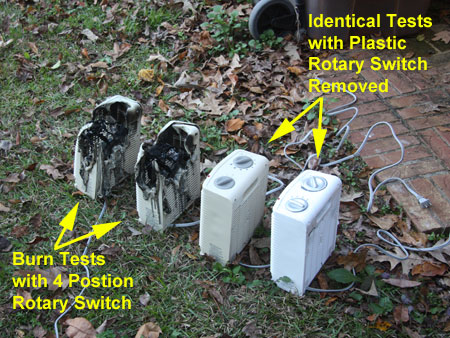
Four Burn Tests were performed. With the On/OFF Switch Removed,
the Fire will not vent through the Plastic Housing (F09-066).
To View the YouTube Video of the Burn Test, Click on it.
A Sunbeam Heater, Model SHF-442, was sent to me to examine along with two exemplars. The suspect heater was in the bathroom. The night of the fire, two kids got up and went into the bathroom. There was far too much plastic left for this to have been the ignition source. The closest 40 inches of power cord to the heater was undamaged. I did not find any electical activity, and I did not find that it could ignite nearby Class A combustibles.
For Maximum Resolution, Click on the Body of the Picture.
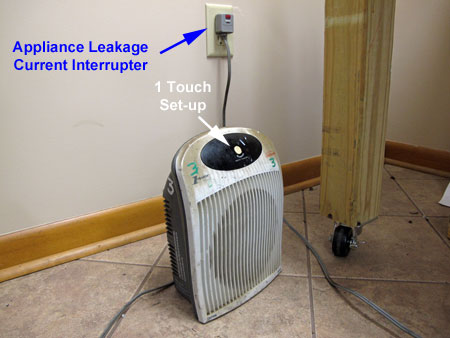
(F14-005) Exemplar Sunbeam Heater, Model SFH-442,
with Appliance Leakage Current Interrupter for Bathrooms.
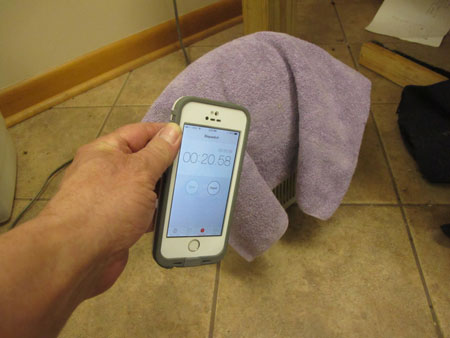
When a Towel was drapped over the Heater,
the Latching Thermostat activated in less than 21 Seconds.